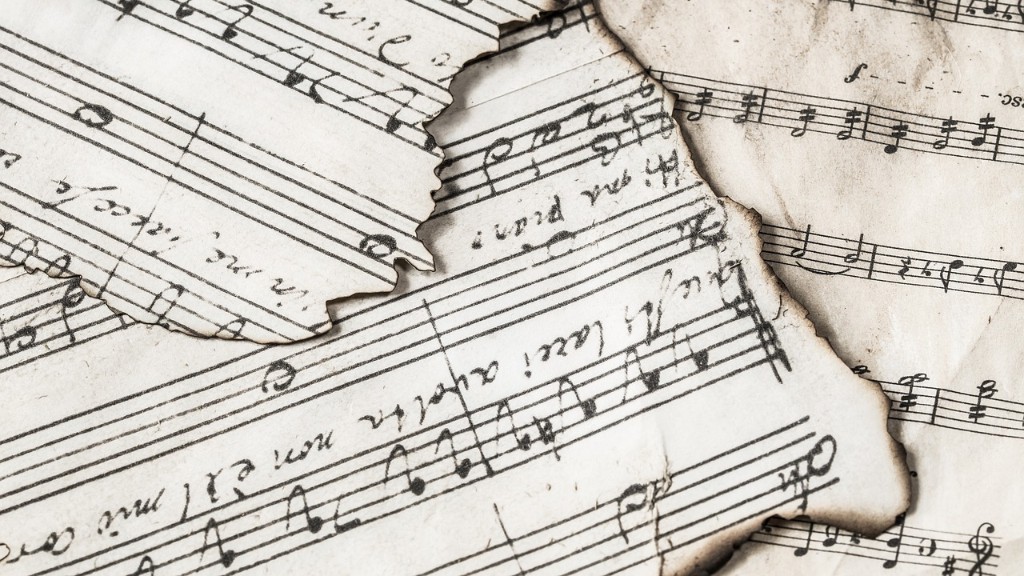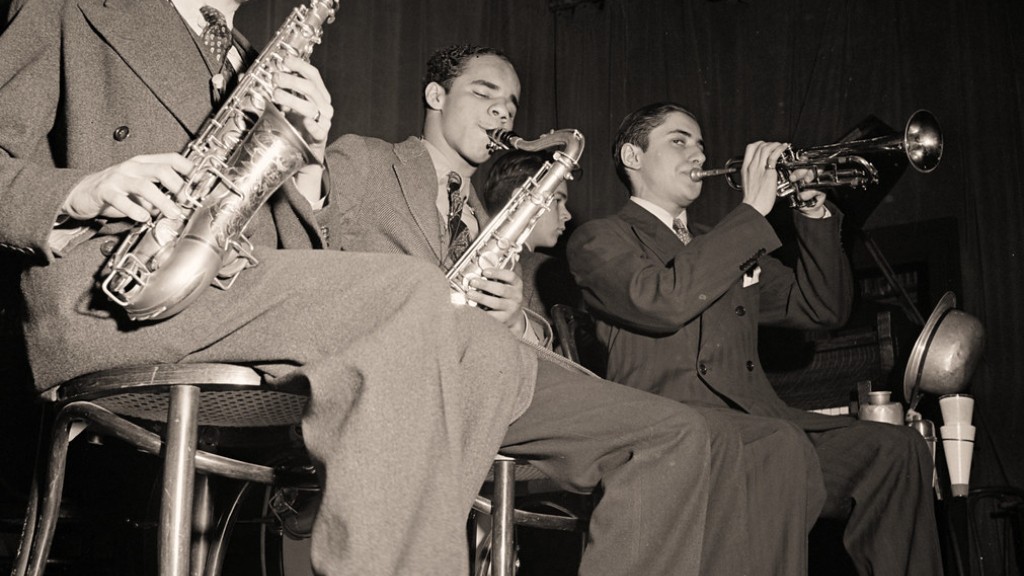Writing sheet music is a process that can be broken down into a few simple steps. The first step is to come up with a melody. This can be done by humming a tune, playing a few notes on an instrument, or finding a pre-existing melody that you like. Once you have a melody in mind, the next step is to figure out the harmonic accompaniment. This involves choosing chords that fit well with the melody and using them to create a pleasing accompaniment. The last step is to add in any other musical elements that you want, such as a drum beat or vocal harmony.
To compose sheet music, you’ll need a basic understanding of music theory and notation. Start by deciding what type of composition you want to create, such as a song, a dance, or a symphony. Then, come up with a melody or chord progression that you want to use. Once you have your idea, begin notating it using a music software program or by hand. Be sure to add in dynamics, articulation, and other markings to make your composition sound the way you want it to. When you’re finished, print out or export your sheet music so that others can play it.
Can I make my own sheet music?
Writing music can be a very simple process, or you can take advantage of the many songwriting tools that technology offers. The most important step is to just get started. Once you have a basic idea, you can flesh it out using one of the many available tools. Whether you’re writing a pop hit or creating sheet music for a big band, the process can be very rewarding.
Composing your own music can be a daunting task, but with these 10 tips, you’ll be on your way to becoming a master composer in no time!
1. Listen to Other Composers
Nobody can compose music without some inspiration. By listening to other composers, you can get a feel for what you like and what you don’t like, and start to develop your own unique style.
2. Learn Music Theory
Music theory is the foundation of good composition. By understanding things like melody, harmony, and rhythm, you’ll be able to create music that is both enjoyable to listen to and technically sound.
3. Play an Instrument (or a Few…)
It’s hard to compose music if you can’t actually play an instrument! If you’re not already a musician, now is the time to learn. Not only will it make composing your own music easier, but you’ll also have a lot more fun doing it.
4. Just Start Writing
The hardest part of composing music is often just getting started. Once you have a few ideas down on paper (or on your computer), the rest will start to come more easily.
5. Write One Part at a Time
Is there an app that writes sheet music as you play
StaffPad is an amazing app that lets you write music notation in your own handwriting, record and import audio, edit with the convenience of touch, and hear your composition played back with breathtakingly realistic sounds. It’s a must-have for any musician!
The process of making sheet music begins in the imagination of the composer. The composer or songwriter may write a piece of music on his own accord, or he may receive a commission from an organization or individual like an opera company, film production company, or a jazz singer. Once the music is written, it must be transcribed into a form that can be read by other musicians. This is usually done by the composer himself, or by a professional music copyist. The finished sheet music is then sent to the publisher, who will print and distribute it.
What is the best source for sheet music?
IMSLP and Mutopia are both excellent sources for free sheet music. If you’re a student who wants free sheet music to use for your own private edification, 8notes is an excellent source.
Sheet music is protected by copyright law, which means that using it without permission can lead to legal trouble. In the United States, copyright infringement can result in fines of between $750 and $30,000. If you’re planning to use sheet music in your school, be sure to get permission from the copyright holder first.
Can I make music with no experience?
Self-teaching can be difficult, but is achievable with the right resources and motivation. people do it all the time and it can be a great way to learn. However, be aware that it takes a lot of work sifting through all the material and piecing it together yourself.
I
Exercise: Simple Syllables
Create a lyric using one headline from your list
Count the number of syllables in that lyric
Say the words several times out loud
Listen to the rhythmic pattern of the line
Write a new lyric from scratch that works well with the first lyric.
Can anyone compose a song
There’s no doubt that writing a song takes some skill and creativity. However, anyone can learn how to write a song with a little bit of practice and effort. All you need is some basic knowledge of a melody instrument, an idea for a song, and the proper methods for putting a song together. With a little bit of practice, you can be calling yourself a songwriter in no time!
There are a number of great options for free music writing software. Our picks for the best free music writing software are:
MuseScore: A great all-around music notation software with a user-friendly interface and a wide range of features.
LilyPond: A powerful music notation software with a clean interface and a wide range of features.
Finale NotePad: A simple yet powerful music notation software with a user-friendly interface.
ScoreCloud: A cloud-based music notation software that is simple to use and has a wide range of features.
Sibelius (free, limited version): A comprehensive music notation software with a user-friendly interface and a wide range of features.
Noteflight (free, limited version): A great cloud-based music notation software with a user-friendly interface and a wide range of features.
Is there a website to make sheet music?
Noteflight is an online music notation software that allows users to create, teach, share, sell and purchase music. The software is easy to use and has a wide range of features that make it a great tool for both music educators and students. Noteflight also offers a huge library of sheet music, which makes it a great resource for both teachers and students.
If you’re looking for the best online tools to write musical notation, you’ve come to the right place. In this article, we’ll discuss the top 4 tools that we think are essential for anyone looking to write music.
First on our list is Soundslice. This online tool is great for writing notation because it’s so user-friendly. Not only is it easy to use, but it also has a lot of features that make notation writing a breeze.
Next on our list is Noteflight. This online tool is similar to Soundslice in that it’s user-friendly and has a lot of great features. One of the best things about Noteflight is that it’s free to use.
Third on our list is blanksheetmusic.net. This online tool is a great option for those looking for a more basic tool for writing notation. It’s simple to use and has everything you need to get started.
Last on our list is Flat. This online tool is a great option for those looking for a more advanced tool for writing notation. It has a lot of features that make writing notation easier, and it’s also free to use.
We hope you found this article helpful. If you
What artists cant read sheet music
There are a number of legendary musicians who never learned to read music. Some of the most notable include Jimi Hendrix, Stevie Wonder, Hans Zimmer, Danny Elfman, Taylor Swift, Bob Dylan, and Aretha Franklin. While each took a different path to success, they all share a common love and passion for music. This list is proof that you don’t need to be a virtuoso to create beautiful and timeless music.
The hardest part of songwriting is finding the right words to express your feelings. Sometimes the hardest part is finding the melody that fits your mood. You may also have trouble finding a unique idea for a song. It can be hard to get more emotion into your songs. You may also have trouble developing and finishing that great idea. You are not alone.
Is writing music a talent or skill?
While songwriting is not something that can be taught, it is a skill that can be improved through accumulated learning. This means that the more you write, the better you will become at songwriting. However, it is also important to note that there is no one “right” way to write a song. Instead, songwriting is an individual expression of creativity, and as such, each person will have their own unique way of approaching it.
Pianists often find themselves performing contemporary music with sheet music as their guide. This is because contemporary music is often very different in style and structure from classical music. As a result, pianists need to be able to read and understand sheet music in order to properly perform contemporary pieces.
Is it worth it to learn sheet music
One of the benefits of learning a piece of music from sheet music is that it can help you remember it better. When you play, you can use the sheet music to visualise the music moving up or down in pitch, and slowing down or speeding up. And, if you do forget, you don’t have to rely on someone else to remind you.
There are a few reasons why sheet music is expensive. Firstly, it costs a lot of money to produce. Many people are involved in the publishing of sheet music and they must be paid at every stage. Composing, engraving, editing, publishing, printing, shipping and selling at stores all contribute to the cost of sheet music. Secondly, music is a copyrighted product. The people who create music own the rights to that music and they can charge whatever price they like for it. Finally, demand for sheet music is relatively low. There are not that many people who need or want sheet music, so the price is high to cover the costs of production and to make a profit.
Warp Up
First, choose the instruments you want to include in your composition. Then, create a basic melody for your song using a piano or other instrument. Once you have your melody, start adding harmony by adding notes that complement the melody. Finally, add rhythm by choosing percussion instruments and deciding on a tempo.
Although there is no one correct way to compose sheet music, there are some basic guidelines that can help you get started. In general, you will need to decide what kind of music you want to write, and then create a melody and harmony that fit together. You can use a variety of different instruments to create your composition, or you can create it entirely on your own. Once you have a basic framework, you can start to flesh out your composition by adding in other elements such as dynamics and articulation. With a little practice, you will be able to create beautiful compositions that will impress your friends and family.


